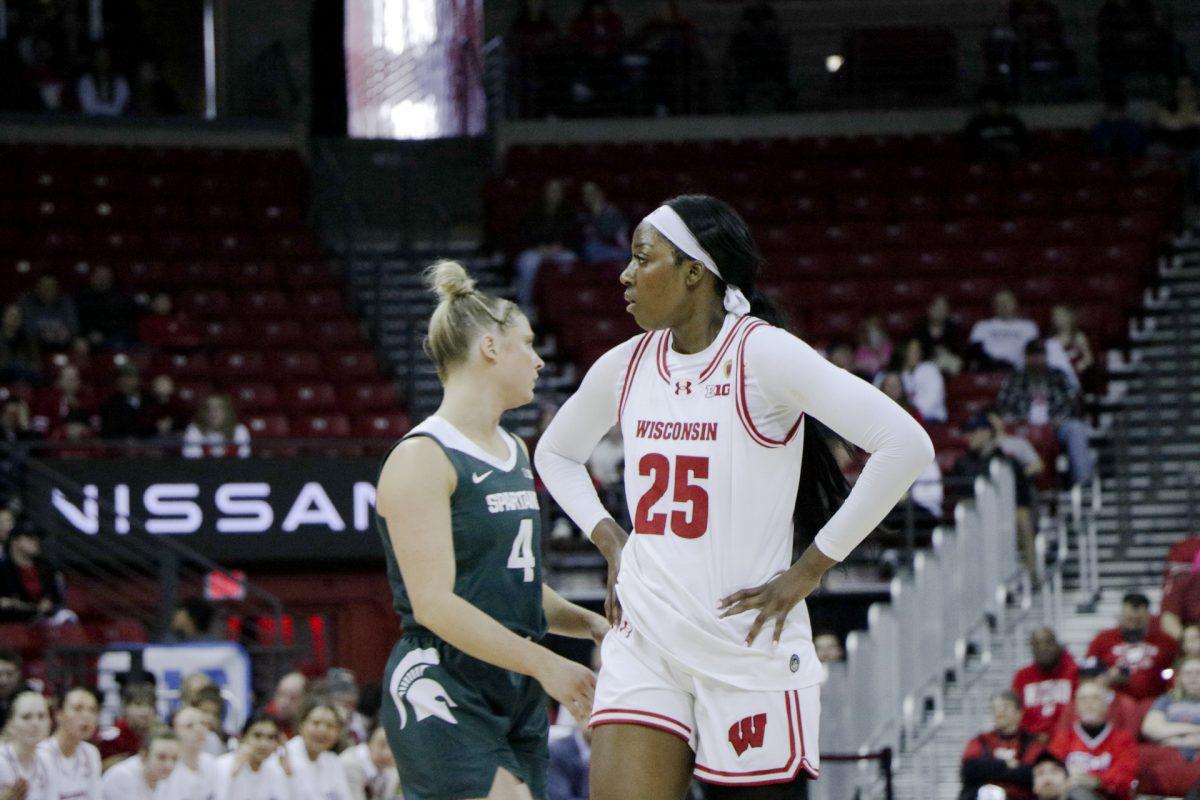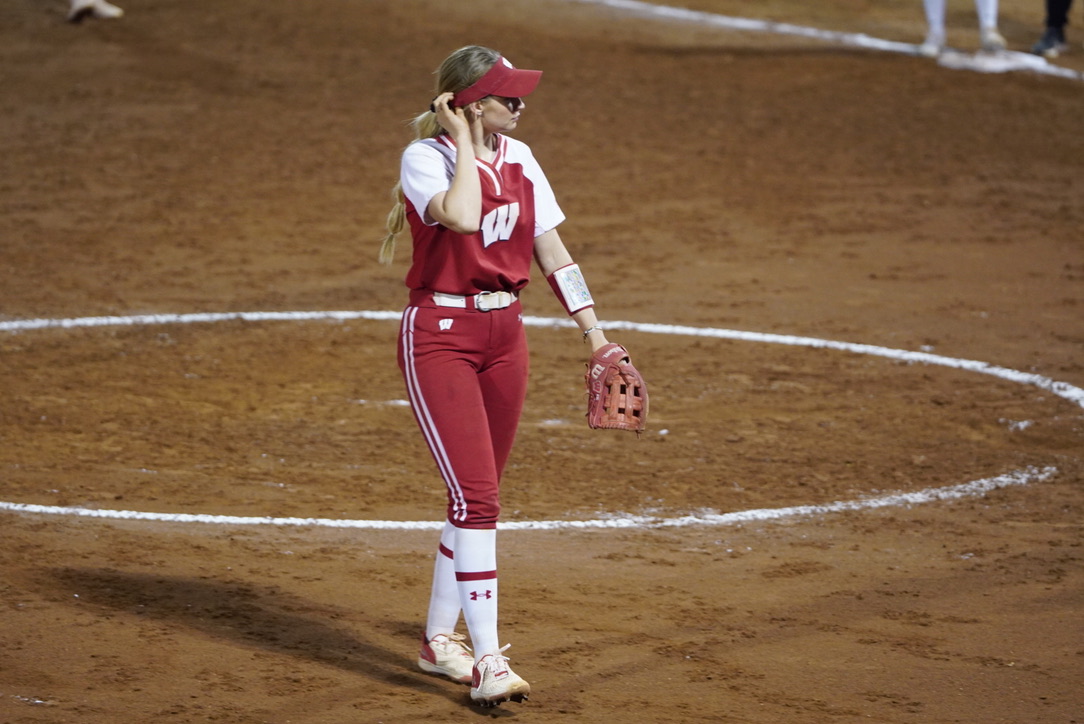The University of Wisconsin’s mission statement lists some lofty goals.
According to the current 1988 incarnation of the statement originally drafted at the university’s founding in 1848, UW strives to “offer broad and balanced academic programs,” “pioneer new fields of study” and “maintain a level of excellence and standards in all programs that will give them statewide, national and international significance.”
Not mentioned in this list, however, are successful sports teams, profitable athletic departments and NCAA championships.
Yet athletics programs have come to dominate the universities that host them. Since the establishment of the first recorded athletic season at UW in 1889 with the introduction of a two-game football season, Wisconsin has continued to add sports throughout the 19th and 20th centuries — slowly accumulating 22 sports programs at the Division I level in the NCAA.
For the 2013-14 season, Wisconsin’s athletic department allotted a $127.5 million budget to operate its many expenses including coaches’ salaries, student-athlete financial aid and construction projects, among others.
Student-athletes play the starring role in helping generate ticket sale revenue of nearly $30 million each year for the Athletic Department. But as the carefully crafted title “student-athlete” implies, it is only half of the role that they serve at universities across the country each year.
The UW Athletic Department carefully noted this dual objective in its own mission statement created in 2001:
“To honor [the Athletic Department’s] academic mission and that of the University, the Division supports the educational aspirations, academic progress and general welfare of the student-athlete.”
However, accomplishing both of these goals simultaneously is no easy feat, especially for the student-athletes trapped in the middle.
The GPA gap
Search for a student-athlete that is excelling in both roles, and junior swimmer Ivy Martin immediately stands out from the crowd.
Currently in her third year on the Wisconsin swim team, Martin was named an All-American in 2013 after finishing sixth in the freestyle at the NCAA Championships. Perhaps just as impressive, the Madison native boasts a GPA in the 3.5 to 4.0 range and is pursuing a double major in sociology and psychology — while still intending to graduate on time.
In fact, the entire women’s swimming team has been a success story of sorts.
In a recent open records request by The Badger Herald, it was revealed that the women’s swimming team holds one of the highest cumulative GPAs as a team, behind only women’s cross-country. Last semester, the team’s 3.24 GPA gave it an average identical to the entire student population, and one team — women’s golf — finished with a team GPA higher than the rest of the student body with an average of 3.3.
STUDENT-ATHLETE GPAS
Average student-athlete’s grade point averages for Fall 2013 by team, listed for the term and listed cumulatively. Data from UW-Athletics.
| Term | Cum. | |
|---|---|---|
| MEN’S BASKETBALL | 2.76 | 2.78 |
| MEN’S CREW | 2.86 | 2.99 |
| MEN’S CROSS COUNTRY | 3.02 | 3.09 |
| MEN’S FOOTBALL | 2.88 | 2.90 |
| MEN’S GOLF | 2.95 | 2.88 |
| MEN’S HOCKEY | 2.85 | 2.93 |
| MEN’S SOCCER | 2.84 | 3.00 |
| MEN’S SWIMMING | 2.94 | 2.94 |
| MEN’S TENNIS | 3.06 | 3.18 |
| MEN’S TRACK | 2.99 | 2.90 |
| MEN’S WRESTLING | 2.78 | 2.75 |
| MEN’S AVERAGE | 2.89 | 2.92 |
| Term | Cum. | |
|---|---|---|
| WOMEN’S BASKETBALL | 3.24 | 3.01 |
| WOMEN’S CREW | 3.13 | 3.11 |
| WOMEN’S CROSS COUNTRY | 3.23 | 3.28 |
| WOMEN’S GOLF | 3.30 | 3.19 |
| WOMEN’S HOCKEY | 2.92 | 2.98 |
| WOMEN’S SOCCER | 2.80 | 2.96 |
| WOMEN’S SOFTBALL | 3.23 | 3.09 |
| WOMEN’S SWIMMING | 3.24 | 3.22 |
| WOMEN’S TENNIS | 3.02 | 3.04 |
| WOMEN’S TRACK | 3.20 | 3.21 |
| WOMEN’S VOLLEYBALL | 3.07 | 3.04 |
| WOMAN’S AVERAGE | 3.13 | 3.11 |
Martin attributes the team’s success to the many opportunities that the Athletic Department puts in place to make sure student-athletes are not falling behind in their studies.
“Freshmen have to spend 10 hours at study tables every week and if you get a certain GPA then you don’t have to go to study tables anymore after your freshman year,” Martin said.
“I take full advantage of the resources they give us like free tutoring, counseling to answer any questions you have,” junior swimmer Aja Van Hout said. “This university offers us a lot.”
Still, many teams — all offered the same services by the Athletic Department — fall short of their non-athlete peers.
The Wisconsin men’s basketball team, applauded for its recent success in the NCAA tournament, completed the fall semester with a combined 2.76 GPA, and only two current men’s teams have managed to maintain cumulative GPAs more than a 3.0.
It has been a few seasons since a high-profile Wisconsin athlete’s GPA or credit-load has dropped below the academic threshold put in place by the NCAA to remain eligible to play athletics each semester. It has happened, however, offering a prime example of the complicated relationship that sports and academics share in a university setting.
In 2010, The Associated Press reported Wisconsin paid a $5,000 fine to the NCAA after the women’s hockey team allowed an academically ineligible player to play in the 2007-08 season.
During the 2005-06 season, then-freshman forward Marcus Landry was ruled academically ineligible for the spring semester and was forced to sit out the rest of the season after appearing in all 16 of the team’s games to that point.
When you take a look at the schedule that student-athletes are expected to maintain day in and day out in order to meet both sets of demands, it becomes easier to see how cases like this can happen.
Van Hout estimates that she spends roughly 30-40 hours each for her academics and athletic responsibilities, respectively, each week. The combination of being both physically and mentally exhausted each day can be hard for others students to relate to, she says.
“During the regular season we have 6:00 a.m. practice so it’s a 5:20 a.m. wake up call for me,” Van Hout said. “It’s a two-hour practice in the morning and then we do class from 8:50 a.m. to about 12:55 p.m. Then from 2-5 p.m. we have practice including lifting and swimming. [… ] After that I give myself about an hour to have dinner and then I get to the books and try to get to bed as early as I can.”
“The last thing you want to do when you get home is do homework, but you have to do it,” Martin added. “It’s just something you can’t really understand until you experience it for yourself.”
The winding road to a degree
Beyond a strict set of GPA requirements, the NCAA requires a number of other checkpoints for its student-athletes if they are to retain their eligibility — among them the requirement that all student-athletes declare a major before the start of their junior year.
While not uncommon for many students at the university to declare their major within that time frame, things become a bit more muddled when highly competitive majors and application majors are brought into the picture.
Schools such as the School of Education, which hosts the Kinesiology program — a popular major for many student-athletes due to its athletic training elements — requires 54 credits to be taken at the time of application, in addition to a number of required prerequisite courses. For a student-athlete taking lower numbers of credits to balance school, getting good grades and athletics, this can make meeting the minimum admission requirements difficult to reach by the end of the fourth semester.
TOP MAJORS
The number of declared student-athletes for each of the ten most popular majors. (Data: UW Athletics)
| 1. SOCIOLOGY | 81 |
| 2. LIFE SCIENCES COMM | 54 |
| 3. KINESIOLOGY | 49 |
| 4. BIOLOGY | 30 |
| 5. POLITICAL SCIENCE | 27 |
| 6. ECONOMICS | 26 |
| 7. PSYCHOLOGY | 19 |
| 8. HUMAN DEVELOPMENT & FAMILY ST | 16 |
| 8. ZOOLOGY | 16 |
| 10. HISTORY | 15 |
| 10. MECHANICAL ENGINEERING | 15 |
| 10. NUTRITIONAL SCIENCES | 15 |
| UNDECIDED | 308 |
| TOTAL | 1038 |
“It’s an NCAA requirement that you have to have a major declared by the beginning of your junior year,” Assistant Athletic Director for Academic Services Doug Tiedt said. “If a decision isn’t made until that point, we can appeal to the NCAA or we can let them know that this decision is still being decided and that they have applied to a program, but we always have a backup.”
As a result, many student-athletes naturally filter into certain majors as placeholders, even if they had originally intended on another major when they began school.
Eighty-one student-athletes — including Ivy Martin — are declared sociology majors, which currently sits atop the list for most student-athletes in the major. According to the department of sociology chair, Pamela Oliver, the flexibility that a sociology degree provides can make it an attractive choice for an athlete trying to stay eligible.
“We have historically been, and we are not unwilling to be, an all-comers major,” Oliver said. “We’re trying to put more structure in, but we’re still willing to let all students take our major and not try to put up gates to entry.”
Oliver, however, was quick to point out that this isn’t the only reason a student-athlete might be attracted to the major, many — like Martin — sign up simply because the major sounds interesting or provides a career path that fits their goals.
“I think they think it’s interesting,” Oliver said. “They find it relevant to their lives. […] There is a sociology of sport class that a lot of athletes. […] The teachers of that course both intentionally reached out to athletes, saw them as people they were interested in relating to.”
Sociology advisor Ellen Jacobson says the sociology program has a long history of making itself available to the academic needs of student-athletes.
Former sociology department chair Jane Piliavin started reaching out directly to the Athletic Department and student-athletes during her tenure as chair from 1994-97.
“One of the first things she required of me was participation in Advisor Night at the Field House,” Jacobson said in an email to The Badger Herald. “Not very many L&S advisors participated in those days.
“She got very close to some of the football players and their families, I know she knitted a few sweaters for them. Jane made it be known to the academic advisors and the athletes themselves that sociology was a welcoming department.”
And yet despite the NCAA providing a number of checkpoints to ensure student-athletes are declaring majors with ample time to complete their studies and graduate on time, the NCAA self-reported that this is not always the outcome.
Termed the Freshman Cohort Graduation Rate, the NCAA compiles graduation data for each class of incoming student-athletes in six-year windows. This means that for the 2006-07 entering class — the most recent class the NCAA has reported — the graduation rate was calculated based on how many students from that cohort had graduated with six years of starting school at the university.
At UW, 75 percent of student-athletes that began attending classes in 2006 had graduated by the end of the 2011-12 academic year compared to 83 percent of the general student population. When the rate was averaged for the last four cohorts the NCAA had calculated, the student-athlete graduation rate fell to 72 percent, while the rate for all students only fell one point to 82 percent.
Among male student-athletes the four-class cohort average fell to 62 percent, compared to the 81 percent for all UW male students.
For Tiedt, this means the academic services offered to athletes are failing to meet their collective goal of having a graduation rate that matches or exceeds that of the student body.
But the issue is not quite so simple.
Tiedt indicated that the most common graduation rate that the NCAA uses does not necessarily paint an accurate picture of the success of student-athletes academically because it only includes freshman athletes who came into the university on scholarship. It does not take into account students that transfer to or away from the university, Tiedt said.
“[It] only refers to the student-athletes that were on scholarship at the beginning of their time here,” Tiedt said. “It has a lot of intricacies that I don’t think truly reflect success. I think you have to look at everything put together.”
In the Graduation Success Rate, which takes into account athletes that go pro or transfer to another school — among other things — student-athletes graduate at a rate nearly 15 percent higher than the student-athlete Freshman Cohort Graduation Rate. However, this is more difficult to compare as no such rate is offered by the NCAA for the general student population.
The debate
As the issue comes under increasing scrutiny each year, it offers an interesting question for the NCAA and athletic departments across the country to grapple with: What role is appropriate for student-athletes at a university?
In a landmark ruling March 27, Northwestern University’s football program earned the right to form a union and bargain collectively after the National Labor Relations Board ruled that they were employees of the university.
While the ruling cannot translate over to a public university like the University of Wisconsin because the NLRB does not have jurisdiction in public universities, it does offer the first ruling in favor of students-athletes as anything other than students first.
For many student-athletes — like Martin — the title student-athlete is a perfect fit. It gives them the opportunity to use their athletic skills to earn their college education at a reduced cost or sometimes even debt free, but for others the necessity that both come packaged together can mean that one role ends up taking a backseat.
Still Tiedt believes drastic changes in the role of student-athletes on college campuses are not likely to happen any time soon.
He suggested a more practical immediate future might present itself in the form of what benefits it can provide its athletes to compensate them in both the academic and athletic realm.
“There is a real effort and a push for institutions […] to be able to provide the full cost of attendance for student-athletes, whether that means providing them with additional meals, or additional costs for travel or with additional monies for incidental costs,” Tiedt said.
“That’s where I think this will really go, with providing students additional ways to meet the costs of what it truly does cost to go to school.”














